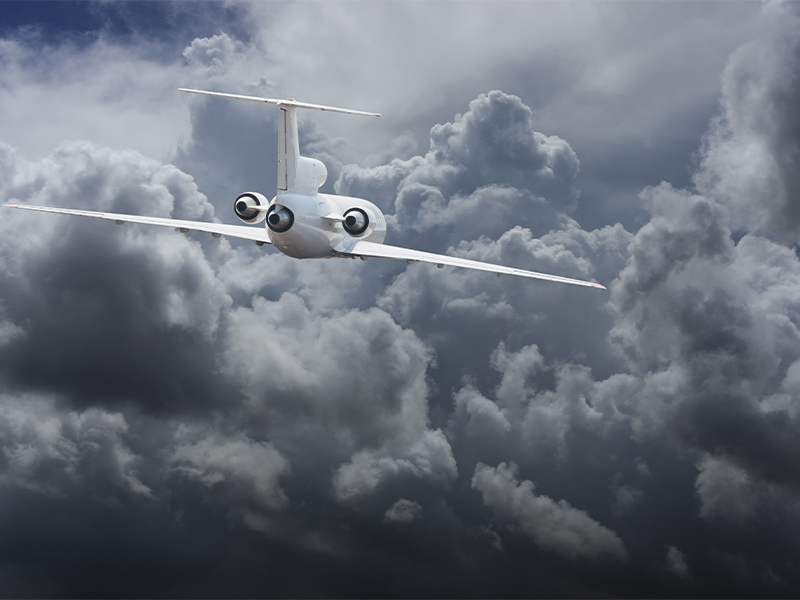Orthopaedic surgeon DR DEREK PARK of Park Orthopaedics discusses the various types of injuries that can occur due to turbulence on flights. Plus, he shares a few tips on staying safe in the air and preventing injuries during bumpy rides.

A few months ago, on a flight bound for Singapore, passengers were thrust into a situation when the aircraft encountered unexpected turbulence. The violent movements and rapid loss of altitude created chaos on board, ultimately forcing the pilot to make an emergency landing. Several passengers sustained injuries, ranging from minor bruises to more serious trauma.
This incident is a reminder of why it’s important to understand the types of injuries that can occur on a flight and the measures that can be taken to prevent them.
When turbulence on flights gets dangerous
Sudden drops in altitude can throw passengers upwards while the aircraft drops, causing them to hit the overhead compartments, then fall back to their seats or to the floor. These impacts can cause head injuries such as concussions, scalp lacerations, and internal bleeding in the brain. Sudden vertical movements can also cause compression and axial loading forces on the neck and spine. This can result in vertebral fractures and spinal cord injuries.
Some of the passengers on this recent flight were seen lying motionless on the floor, suspected of having either spinal or limb injuries. Uncontrolled sudden movement of the head can also result in neck injuries, including whiplash. If passengers were not seated with their seat belts fastened, they could sustain direct impacts with objects like seats and other cabin structures, resulting in injuries to the limbs such as forearm, wrist, hip, and knee fractures. Finally, loose objects like pens, laptops, and stationery can become projectiles and cause injury.

How to prevent turbulence-related injuries from happening
It may not always be possible to anticipate turbulence on flights. The best thing to do is to prepare for situations like this by taking these fairly simple steps.
• Before flying, prepare for the possibility of extreme turbulence and mentally visualise what you would do in such a situation. Wear comfortable, loose clothing, comfortable shoes. Avoid wearing large or sharp jewellery so that assuming a brace position will be relatively easy.
• During, if turbulence on flights is encountered, keep your seat belt on and fastened securely. This will prevent ejection from the seat and limit uncontrolled movements.
• Follow the crew’s instructions quickly. For example, if they tell you to return to your seats and fasten your seat belts, do so as quickly as possible.
• Do not leave loose items lying around that could act as projectiles.
• Maintain a brace position by placing your head on your knees and your hands behind your head. This can help limit injury to the head and neck. If you find it too difficult to get into a brace position, it would be better to sit as far back in the seat as possible against the headrest to minimise neck movements and reduce the risk of whiplash.
Final word on turbulence
Both passengers and airline crew play crucial roles in ensuring safety during a flight. Following this incident, airlines have also introduced improved safety measures for passengers. And it’s essential that passengers remember to adhere to these protocols for their own safety.
About the doctor
Dr Derek Park is a senior consultant orthopaedic surgeon at Park Orthopaedics who specialises in foot and ankle surgery. He holds a dual fellowship in Orthopaedic Trauma Surgery and Foot & Ankle Surgery.
Park Orthopaedics
#05-13 Gleneagles Medical Centre, 6 Napier Road
9192 2515 | admin@parkorthopaedics.com.sg | parkorthopaedics.com.sg
To make the most of living in Singapore, read our latest City Guide here for free!
This article on turbulence on flights first appeared in the August 2024 edition of Expat Living. You can purchase the latest issue or subscribe so you never miss a copy!
Don't miss out on the latest events, news and
competitions by signing up to our newsletter!
By signing up, you'll receive our weekly newsletter and offers which you can update or unsubscribe to anytime.


